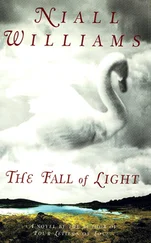The third reason received less attention. In the summer of 2011 the Obama administration had an internal debate on the usefulness of signature killing. The catalyst for this debate was the clumsy Datta Khel strike, which killed numerous civilians (discussed previously). Discussion of this collateral damage tragedy among U.S. officials ultimately led to a tightening of restrictions on signature killings of low-ranked Taliban fighters.
The story of the tightened restrictions was broken in November 2011 by the Wall Street Journal , which reported that the CIA had backed down on its “wide net” policy of killing low-ranked Taliban foot soldiers after U.S. military and diplomatic officials complained that they were damaging America’s tenuous relationship with Pakistan. Although they recognized the strikes’ overall tactical effectiveness, members of the U.S. military and State Department had asked the CIA to be more selective in their targets. According to the Wall Street Journal , “The disputes over drones became so protracted that the White House launched a review over the summer, in which Mr. Obama intervened.” 133
In the end the CIA conceded to the more restrictive parameters for signature killings. One senior U.S. official described the new drone strike standards as follows: “The bar has been raised. Inside CIA, there is a recognition you need to be damn sure [the strike] is worth it.” 134In addition, the State Department won greater sway in influencing strike decisions, Pakistani leaders were to be given advance notice about future drone operations, and the CIA agreed to suspend drone strikes when Pakistani officials visited America. Soon thereafter the pace of drone strikes in Pakistan began to drop off.
The fourth reason for the decrease in drone strikes was the so-called Salala incident, on November 26, 2011, which led to an almost two month lull in attacks. The Salala incident was the lowest point in Pakistani-U.S. relations since Bush and Musharraf had forged the post-9/11 alliance. It involved a case of friendly fire on the Afghan-Pakistani border that led to the death of twenty-four Pakistani soldiers, including two officers, at the hands of American airpower.
The incident began on the night of November 25 and early morning of November 26 when a joint Afghan-U.S. patrol was fired upon from a position on the Pakistani side of the border. Believing that they were taking fire from Taliban militants, the U.S.-Afghan force called in air support from Apache Longbow attack helicopters, an AC-130 gunship, and at least one F-15. The U.S. air assets attacked a Pakistani army checkpoint on Salala Mountain in the Mohmand Agency, which was known by its code name “Volcano,” where they thought the fire originated from. This checkpoint then radioed to a nearby checkpoint known as “Boulder,” which fired antiaircraft weapons at the intruding helicopters.
The helicopters, however, returned to attack a second time as the Pakistanis frantically tried to contact U.S., Afghan, and NATO forces to call off the air assault. When communication was finally established, the attack was terminated, but not before twenty-four Pakistani soldiers at checkpoint “Volcano” had been killed and thirteen wounded. The primary fault lay in poor communication between the Pakistanis and the Afghan-U.S. force as well as a lack of information on their respective positions in an area where Taliban fighters were known to operate. Each side blamed the other. 135
Regardless of who fired first, the killing of twenty-four Pakistani soldiers on Pakistani soil caused outrage across Pakistan. Having barely tolerated CIA spies, drone strikes, border raids, and political pressure to do more in the FATA for the years, not to mention the SEALs’ ground attack against bin Laden, the Pakistani military and political establishment were furious. Obama personally apologized for the incident: “For the loss of life—and for the lack of proper coordination between U.S. and Pakistani forces that contributed to those losses—we express our deepest regret. We further express sincere condolences to the Pakistani people, to the Pakistani government, and most importantly, to the families of the Pakistani soldiers who were killed or wounded.” 136But his words were not enough.
As the bodies of the slain Pakistani army “martyrs” were publicly buried, there were anti-American protests throughout the country. A Pakistani official asked, “How can anyone expect a regime in Islamabad to be giving more support to the U.S. when our soldiers are being killed in cold blood?” 137
The Pakistani response to the Salala incident came a day after the attack. First, they closed down the NATO supply lines that allowed convoys to transport supplies from the port of Karachi through the Khyber Agency to troops in Afghanistan. These supply routes were not reopened until July 2012, when Secretary of State Hillary Clinton apologized for the Salala incident. Second, and most importantly for the drone campaign, the Pakistanis gave the Americans fifteen days to vacate the premises of the “secret” drone base at Shamsi in Baluchistan. America moved to respond with alacrity, and U.S. cargo planes removed equipment and personnel from the base before the December 11 Pakistani deadline. 138The Pakistanis also threatened, “Any object entering into our airspace, including U.S. drones, will be treated as hostile and be shot down.” 139At this time anti-Americanism rose to a fever pitch among Pakistani army officers who felt that the Salala incident was a purposeful action intended to punish Pakistan for not tackling the Haqqani Network in North Waziristan.
Thus did the historic drone war, which began with the night killing of Nek Muhammad on June 18, 2004, and which accelerated to more than a hundred strikes in 2010, come to a sudden and unexpected halt in November 2011. The last drone strike of the 2011 campaign was on the night of November 15–16, 2011, in South Waziristan, the very territory where the first strike on Muhammad was carried out more than seven years earlier. 140From this point forward, a Pakistani official has said, the drone strikes will most likely be limited to “high profile targets.” 141Another Pakistani official said, “There is likely to be some arrangement on drone attacks, with Pakistan calling for large reductions in their number and geographic scope, and demanding prior notification and approval of every strike.” 142
The post-Salala lull gave the Taliban and al Qaeda a much-needed reprieve from years of constant aerial bombardment. On January 6, 2012, the New York Times published an article titled “Lull in US Drone Strikes Aids Militants in Pakistan,” which reported, “A nearly two-month lull in American drone strikes in Pakistan has helped embolden Al Qaeda and several Pakistani militant factions to regroup, increase attacks against Pakistani security forces and threaten intensified strikes against allied forces in Afghanistan, American and Pakistani officials say.” The article ended by quoting a member of the newly emboldened Haqqani Network who said of the drones, which were flying overhead but now no longer firing, “There are still drones, but there is no fear anymore.” 143A FATA-based Pakistani security official said, “The militants were quite happy with this lull and they were publicly operating in the region as they were no more worried for their lives.” 144
That impunity ended on January 10, 2012, when a drone struck in Miranshah, North Waziristan, killing “at least four militants.” A local eyewitness reported of the strike, “It was an unusually big bang. Since it was extremely cold I didn’t leave the house, but could see a house on fire.” 145Reuters reported, “The latest drone strike in Miranshah appears to demonstrate that if there was any kind of moratorium on such attacks, it has now been lifted.” 146
Читать дальше












